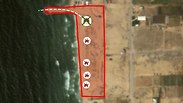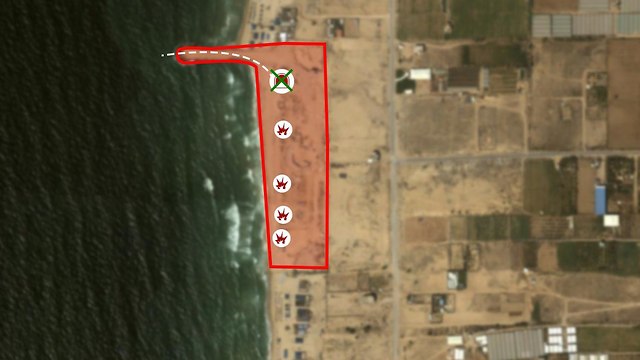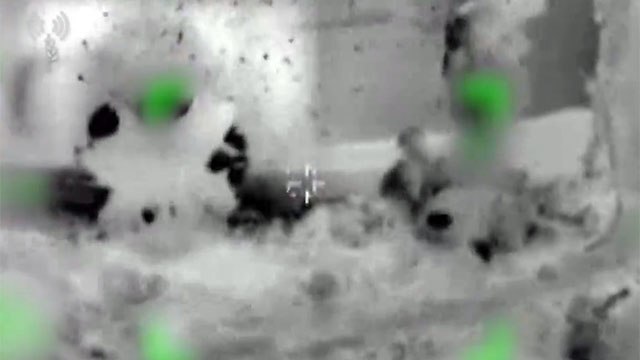Israeli Air Force fighter jets bombed a terror tunnel in northern Gaza in the early hours of last Sunday meant to be used by Hamas's elite Nukhba naval commandos to secretly go underwater, it was cleared for publication on Sunday.
The strike was part of the IDF's retaliation to the barrages of rockets and mortar shells fired from the Gaza Strip the week before.
The entrance to the tunnel, which was similar in structure to a sewage tunnel, was in a building used as a Hamas military post in the northern Gaza Strip, three kilometers south of the border with Israel.
The tunnel then continued several dozens of meters underground until it reached the shoreline, and from there it continued into the water on until it reached a depth of 2-3 meters. At this depth, Hamas's divers could go out to sea without being spotted by IDF observers.
Hamas likely planned to use the tunnel to send dozens of commandos to the Zikim beach to attack a nearby Israeli community or a strategic site—such as the Eilat-Ashkelon Pipeline or the Rutenberg Power Station.
A senior Navy officer said the IDF has been "sitting" on the intelligence about the tunnel for several months, and operational considerations determined the timing of the strike.
It is possible the Hamas naval force, which has come under IAF attacks several times in recent months, has similar tunnels, and the intelligence effort to find them continues.
"Hamas has invested a lot of resources in the construction of this tunnel," the Navy officer said. "We consider it a 'blue tunnel'—from land to sea."
"The Hamas commando unit has dozens of fighters, with civilian diving equipment that allows undetected movement underwater without creating bubbles. Such measures are effective in the three kilometers between the tunnel and the border," he added.
Hamas's naval commando force, which was first exposed when it infiltrated the Zikim beach during the 2014 Operation Protective Edge, has grown stronger since the war. The IDF has been watching the Hamas naval commandos train on an almost-weekly basis, using advanced weapons and diving equipment.
The Israeli Navy is training for different scenarios, including one in which Hamas divers infiltrate Israel armed with anti-tank missiles, which they would use to attack IDF posts or the Rutenberg Power Station near Ashkelon.
Since Protective Edge, the Navy has deployed a system of sensors along the naval border detecting and alerting the troops to any suspicious movements in the water. This system has been upgraded in recent years, passed many tests successfully, and Navy forces from the Ashdod base have already on several occasions dropped explosives in the water targeting the divers, whenever suspicious underwater movement was detected.
In addition, over the past month, the Defense Ministry started work on an underwater obstacle against Hamas's commando forces, which will make use of the sensors system and include a breakwater in the Netiv HaAsara area.




















